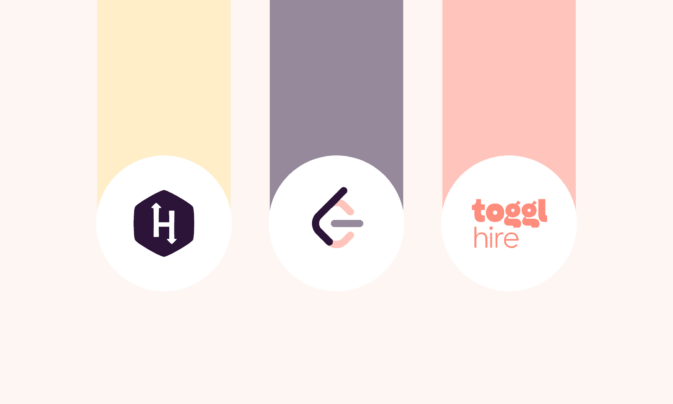Interviews aren’t a one-way street — they’re a two-way interaction. While that might sound obvious, as recruiters, we often overlook our own biases that can tilt the balance in favor of certain candidates.
Just like a football game on a sloped field, interviewer bias can skew the results, making it impossible to identify the best fit. So, what’s a diligent hiring team to do?
It all starts by understanding the concept of interview bias, its origins, and real-world implications. If you stick around until the end, we’ll also provide tips for ensuring an unbiased, fair hiring process to help you level the playing field for all applicants.
TL;DR — Key Takeaways
Interviewer bias is a type of unconscious bias that can easily creep into the hiring process. It results in discrimination against job candidates based on factors other than their skills.
There are many types of interviewer bias, including confirmation bias, the halo effect, and stereotyping. Each of them leads to the same thing: hiring decisions based on prejudice, not merit.
Employers can do several things to avoid interviewer bias. Solutions include crafting an ideal candidate profile, performing job task analysis, using blind screening, hiring manager training, diverse hiring panels, and job-related criteria.
Skills-based assessments like the ones offered by Toggl Hire and similar platforms can also neutralize bias in the interviewing process. Neutral skills tests evaluate candidates based on job-related skills. Nothing else enters the picture.

What is interviewer bias?
Interviewer bias is a form of unconscious bias that happens when hiring managers allow biases to influence how they assess candidates. Sound familiar? If you’re honest, the answer is probably yes — and that’s totally normal.
According to the Society for Human Resource Management, a whopping 79% of HR departments believe unconscious bias plays a role in their hiring process, making interviewer bias a systemic problem afflicting almost every recruitment team.
While common, it’s not a minor issue, either. Aside from the potential issue of favoring or discriminating against candidates based on non-job-related factors, bias leads to bad hires and spiraling recruitment bills.
Not only that, but studies have shown unconscious bias in hiring potentially costs companies billions of dollars in lost revenue each year.
How interview bias affects the interview process
On the surface, interview bias tends to take two forms: positive and negative — both in relation to candidate outcomes (so, not necessarily positive or negative for your business).
Positive bias, in this case, usually benefits the candidate and occurs when the hiring manager favors them for whatever reason. Negative bias is the opposite and hurts the chances of an interviewee succeeding before they can even say a word.
However, bias generally has no place in the interview process, and interview bias should be avoided at all costs, namely for these reasons…
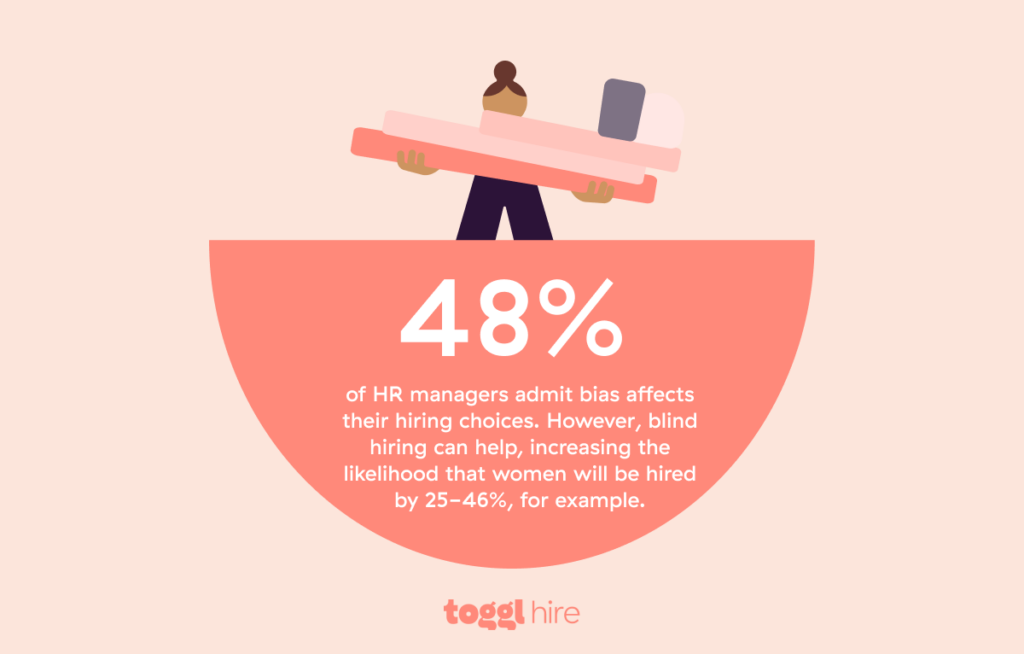
Inconsistencies
Any great structured interview should include similar questions to make it easier to objectively compare candidates. However, with unstructured interviews, which are more prone to interview bias, interviewers may ask different questions to interviewees, resulting in an unfair candidate experience.
For example, racial bias can lead recruiters to ask ethnic minority candidates about their life experiences. However, when interviewing caucasian candidates, the same interviewer focuses on academic credentials.
Stereotyping
Stereotyping bias is when you apply (presumed) generalized qualities to individuals.
For example, people tend to approach candidates as representatives of groups (such as women or ethnic minorities) and allow pre-existing beliefs about these groups to influence their recruiting judgments.
An example in a hiring situation might be recruiters labeling all women unsuitable for physically demanding roles.
Negative emphasis
Negative emphasis is a subtle but common form of interviewer bias. In this case, interviewers form opinions about a candidate based on superficial or subjective negative factors, like where a candidate lives or other factors that have no actual value.
Cultural differences
Our cultural background shapes how we communicate and relate to others. However, interviewers can often mistake culturally engrained traits for candidate weaknesses.
For example, some cultures communicate directly with constant eye contact. Others are more reserved and value considered speech, taking more time to answer interview questions.
As a type of first impression bias and stereotype bias, interviewers should work to eliminate preconceived ideas based on differences in dress, posture, and formalities like greetings.
Different types of interview bias
Unfortunately, there are many different types of interview bias, but here are some of the most common biases you’re likely to encounter regardless of your interview method.
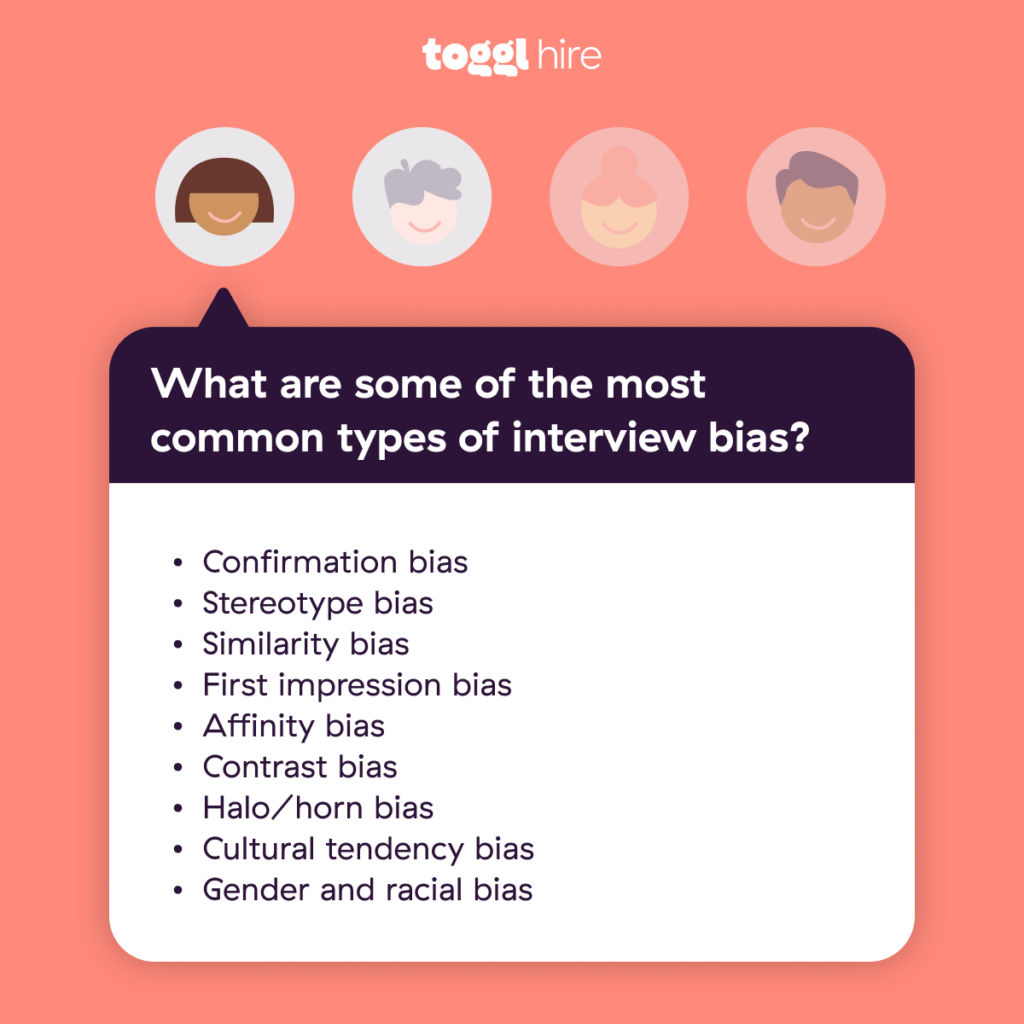
Confirmation bias
Confirmation bias is when you seek out information that confirms existing beliefs. For example, during small talk, the interviewer might find out that the candidate went to the same university as they did and, therefore, develop a more positive impression of them. Throughout the interview, they ask them questions to intentionally confirm that bias.
Stereotype bias
Stereotyping biases mean you judge candidates based on a perceived group identity, not individual qualities. Lazy recruiters rely on generalizations instead of assessing everyone equally. There are many examples of stereotyping in hiring — all of them harmful.
For instance, recruiters often view women as suited to customer-facing secretarial roles because of the societal stereotype that women are kinder and more people-pleasing. Or, women with families may lose out on roles involving travel due to concerns about work-life balance.
Similarity bias
Everyone is inclined to look positively at people who share their interests. Sorting by similarity works fine in everyday life, but similarity bias is less helpful when recruiting employees. If affected by this bias, recruiters might make hiring decisions based on who shares their interests, hobbies, or beliefs while overlooking the potential fit for the company.
First impression bias
First impressions naturally influence our perceptions of people, but you shouldn’t trust snap judgments if your goal is to conduct interviews that are fair and foster an equitable hiring process. Impression bias shows up clearly in interview data.
Research suggests almost 60% of recruiters form judgments in the first 15 minutes of interviews. What happens after is immaterial, effectively wasting the rest of the interview.
Affinity bias
Affinity bias resembles similarity bias and refers to the inclination to hire individuals similar to ourselves in age, gender, race, or ethnicity. Affinity has a certain logic from the interviewer’s perspective (after all, we’re great, right?). However, it can decimate diversity and inclusion efforts.
Contrast bias
The contrast effect occurs when recruiters compare candidates to each other. This form of bias can materialize during long interview days when you’re seeing (and naturally) comparing candidate after canddiate, but falling for the contrast effect is always a mistake.
This is why tools like skills testing are so important to evaluate candidates fairly. Otherwise, contrast bias can pollute the process. Confident performers can potentially overshadow qualified candidates by “wowing” interviewers, resulting in poor recruitment decisions.
Halo/horn bias
The halo effect allows one positive trait about a candidate to influence the overall assessment of their suitability for the job. For instance, recruiters may be impressed by appearance when interviewing candidates, causing them to overlook other shortcomings.
Conversely, the horn effect means one negative trait can ruin a candidate’s chances of landing the job. Candidates may greet interviewers briskly due to nerves but do well from then on. Or, they could do poorly in early skills tests but ace later exercises.
Nonverbal bias
Some interviewers judge a candidate’s ability based on appearance or nonverbal cues. Examples could include professional dress or (lack of) eye contact. Body language matters but is rarely the decisive factor. Stick to job descriptions and objective assessments instead.
Cultural noise
When affected by this bias, recruiters are susceptible to politically correct answers and fail to analyze answers according to role requirements. This bias is basically a form of laziness and has no place in the modern hiring process.
Gender and racial bias
These all-too-common biases label entire racial or gender groups as unsuitable. Aside from being illegal, gender and racial bias make evaluating candidate strengths impossible. They also encourage an unhealthy interview atmosphere, making it even harder for candidates to shine.
Real-world examples of bias in the hiring process
The variations of interviewer bias are endless. But how do they damage hiring decisions? Let’s quickly walk through a few real-life scenarios showing how bias plays out in the recruitment process.
Affinity bias is common in management-level recruiting. Imagine a scenario where senior employees assess strategy management candidates. Both interviewers went to Ivy League colleges. One candidate shares the same school as the lead interviewer, who subconsciously elevates them up the recruitment ladder.
Non-verbal bias is even more widespread. For example, consider a day of interviews for junior sales positions at a real estate firm. Interviewers want clean-cut, presentable candidates with analytical skills, IT expertise, and numeracy. However, they pass over qualified interviewees with longer hair or tattoos (even if they are easy to hide).
12 ways to avoid interview bias
By now, it should be pretty clear that interview bias can cloud your judgment and make it more difficult to find the right candidate. But how do you remove bias from a real-world interview process?
There’s, unfortunately, no magic wand. We’re human, and we have to learn how to reduce unconscious bias intentionally. These 12 best practices below will help you recruit in a more objective and impartial way.
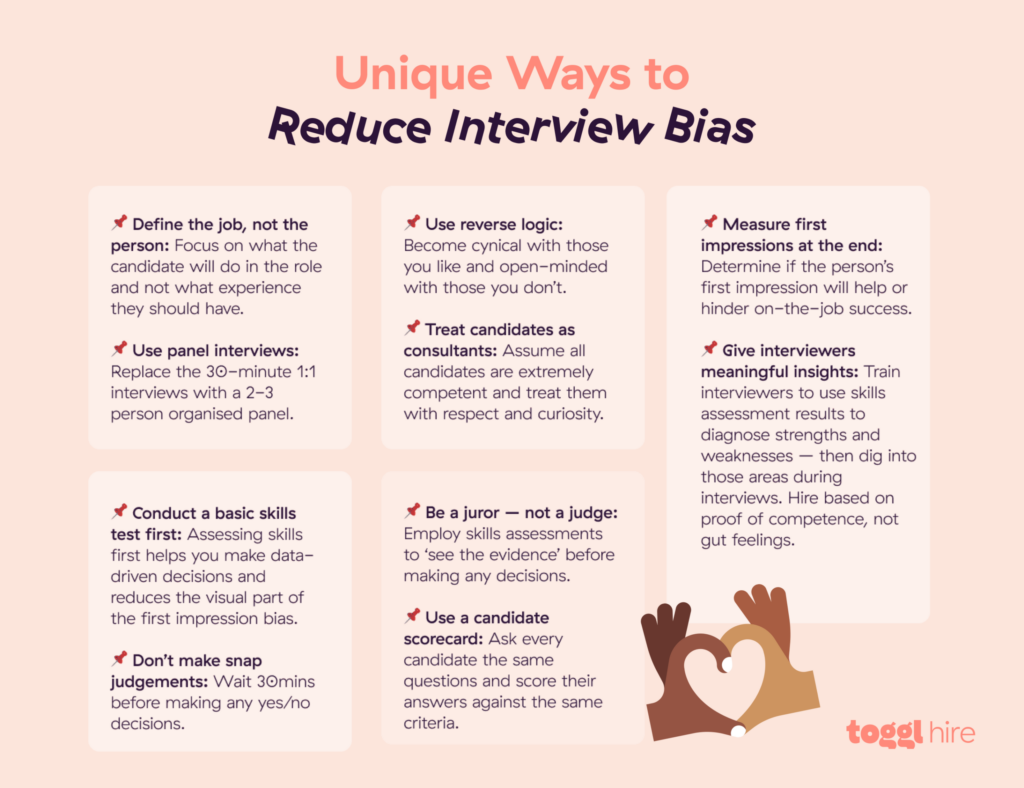
1. Consider your hiring goals
The first tip for reducing bias is to use clear, objective hiring goals to guide the interview process. Clear goals provide a foundation for eliminating bias, as recruiters know what to look for and how to compare candidates.
Start with a detailed job task analysis. Consider the specific tasks and responsibilities associated with the position. Focus on job requirements like skills or experience as subjective qualities are more susceptible to bias.
Then, create a comprehensive ideal candidate profile outlining the necessary skills, experience, and qualifications for the role. Use that ideal candidate profile to write a compelling job description.
2. Conduct structured interviews
Asking standardized questions to all candidates is another reliable way to reduce hiring bias. Choose predetermined questions based on role requirements. Follow the structure of interview scorecards (see below) or an interview guide, ensuring each interview follows the same order.
💡 Remember: Candidates should have a consistent experience, and everyone needs the same amount of answering time.

Following standardized questions consistently ensures equal treatment and evaluation for all applicants. This minimizes the potential for bias to seep into the process while facilitating easier comparison and assessment of candidates.
Asking objective questions is also critical. Strategic interview questions explore relevant candidate experience or personal qualities without adding sources of bias. Feel free to take a few of our strategic interview questions when structuring the interview process.
3. Prepare interview scorecards
Interview scorecards grade candidates on a rubric according to predefined criteria. They complement structured interviews and reduce the risk of unconscious bias by ensuring every answer receives equal consideration.
Effective scorecards use job criteria to rate candidates. Scoring criteria include ratings based on required skills (both soft and hard) and candidate performance. When added together, ratings deliver a candidate score that is, ideally, bias-free.
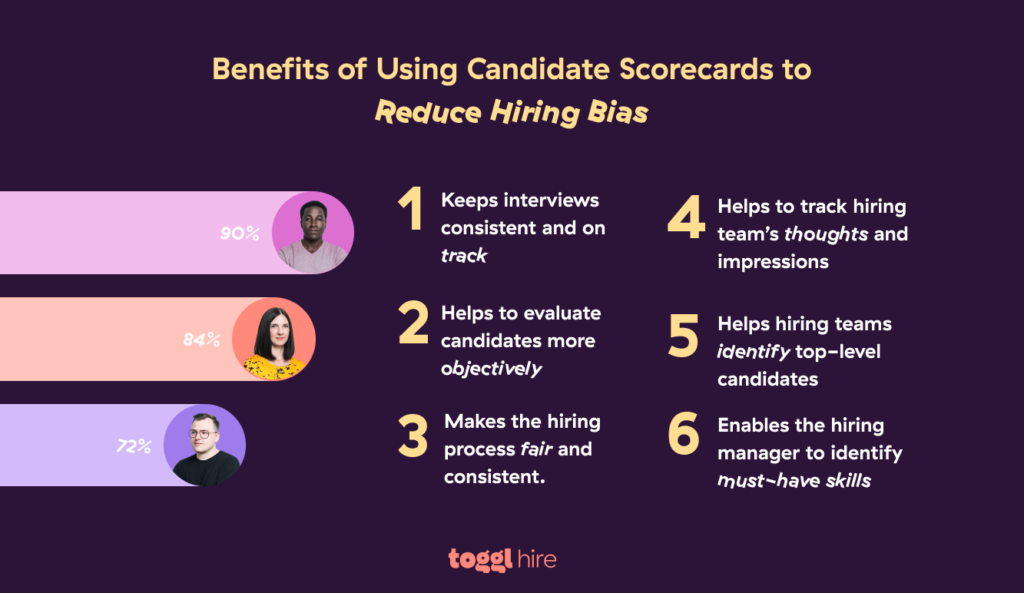
There is still scope to take careful notes during interviews, and scorecards should include space for observations. Try to label text fields according to skills, personality, or experience, as this encourages interviewers to record targeted information.
Check out our candidate scorecard template to see how it’s done.
4. Provide interview training
Proper training is also an important aspect of reducing recruitment bias. Knowledge and awareness of biases empower interviewers to make objective assessments and minimize biased decision-making.
Equip hiring managers with thorough interview training on critical issues. For instance, training should cover bias awareness and techniques for mitigating its effects. Employees should know how to structure interviews and use scorecards.
Training in legal interview practices also underscores acceptable and unacceptable approaches to candidate assessment.
5. Conduct a phone interview first
Phone interviews remove the temptation to judge individuals based on non-verbal factors like appearance or body language. They also reduce the risk of racial or cultural bias and avoid a misleading first impression.
However, when screening candidates by phone, follow a clear structure and keep calls short. Focus on relevant information about skills and experience, keeping everything role-related. Or, if you’re hiring at scale, use video intros as a way to automate and improve the initial screening process.
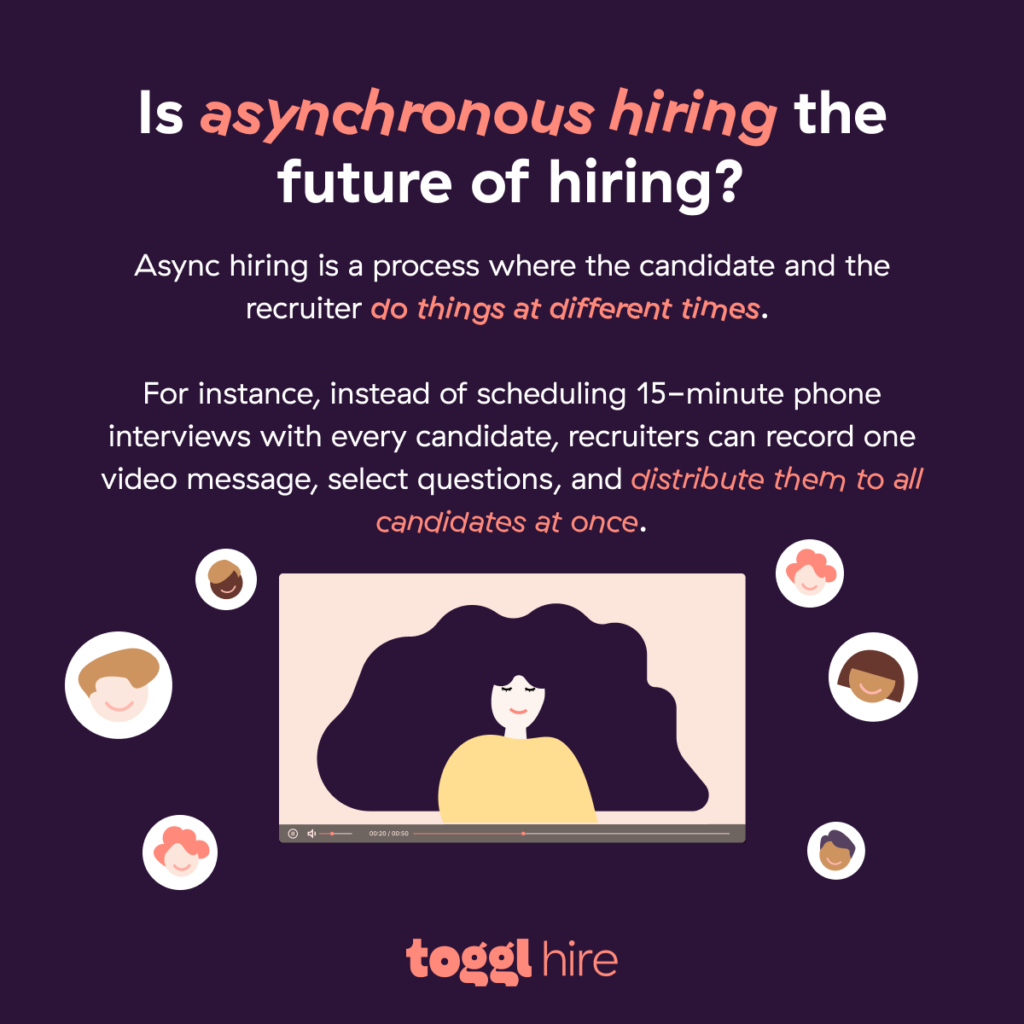
6. Minimize unrelated discussion
Whether screening candidates or handling two-hour interviews, interviewers must stay on point and minimize chit-chat.
Freeform interviews allow irrelevant small talk to enter evaluation processes when you only need to assess role requirements and candidate skills. Stick to your predefined structure and scorecard instead. Ask targeted questions with gradable outcomes and avoid open-ended queries leading nowhere.
7. Implement blind hiring practices
Blind hiring tools help you review candidate applications without personal information such as names, ages, genders, or race — the four horsemen of unconscious biases. Hiring blind is one of the most effective ways to avoid top talent slipping through the cracks.
Applying blinders to the recruitment process should occur early on, though. Automated software can screen blind resumes and cover letters without considering personal information.
8. Include skills tests
Use skills tests to generate objective data about candidate abilities. Expert-designed tests remove a common source of subjectivity from the recruitment process and give hiring teams more clarity about candidate strengths.
There are various types of skill assessment, with methods to suit every role:
Job simulations suit complex roles where recruiters need to know how candidates will perform at work.
Soft skills tests match candidates with company culture and suit customer-facing roles.
Technical skills tests assess specialist abilities — for example, in SQL coding or administering cloud environments.
Screening tests are shorter and less complex. They help shortlist candidates for interviews or further testing.
Testing is an area Toggl Hire knows well, but we aren’t just promoting our services here. Skills tests are an integral part of unbiased recruitment. Check out our test library to discover what to test and how tests supplement interviews.

9. Conduct panel interviews
Panel interviews might not entirely remove bias from the interview process, but they help. Panels avoid situations featuring a single biased interviewer. As a rule, multiple viewpoints and backgrounds produce better outcomes than one recruiter on their own.
Seek diverse perspectives by staffing panels with diverse teams. Bring in individuals from different departments and train every panel member as you would a veteran HR expert. Consider the views of every panelist and use scorecards to ensure everyone’s assessment has the same weight.
10. Recruit broadly on multiple channels
Never limit yourself to familiar sources. Recruit everywhere you can. Using a variety of recruitment channels results in a more diverse talent pool, neutralizing biases at the candidate sourcing phase.
Channels to think about include:
Digital Recruiting Platforms: Use reputable platforms and write inclusive job descriptions to appeal to a wide range of candidates.
Social Media Presence: Create compelling content showcasing your company culture, values, and commitment to diversity and inclusion. Actively participate in relevant online communities to expand your reach.
Networking Events and Job Fairs: Strengthen your employer brand by engaging with attendees and showcasing your commitment to a bias-free hiring process.
Employee Referral Programs: Leveraging employee networks can diversify your applicant pool. Provide incentives for successful referrals to encourage participation.
Collaboration with Diversity-Focused Organizations: Professional associations, community groups, or minority-focused organizations can open doors to a deeper talent pool. Attend events, sponsor initiatives, and actively engage with their networks to attract more diverse applicants.
Campus Recruiting: Participate in career fairs, sponsor events, and offer internships or co-op programs. Engage with student organizations focusing on diversity and inclusion to build relationships with potential candidates.
If other channels fail, agencies can help you access specialist talent networks and hard-to-reach groups.
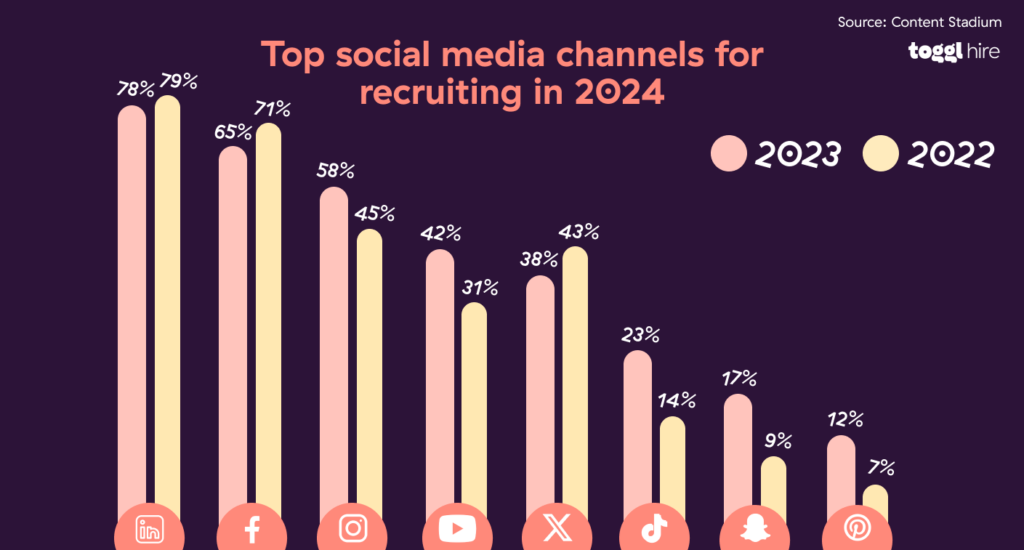
11. Don’t rely on your “gut” instinct
People like to believe they have keen intuition. However, in recruiting, hunches rarely lead to hiring the right person. Gut instincts are sometimes right, but they’re just as often a source of unconscious bias.
Never assume you naturally have the ability to sniff out elite talent. Pair intuition with objective assessment tools like scorecards, structured interviews, and skills tests to get the best results.
12. Regularly review your hiring process
Finally, long-term success requires a reflexive interview process. Regularly review outcomes and the decision-making process. Eliminating bias is a constant challenge, not a set-and-forget solution. Schedule frequent audits to assess how well you keep bias out of the interview room.
Avoid unconscious bias with Toggl Hire
Unconscious bias can creep into the process at any stage, from initial screening to final interviews. Fortunately, companies can combat interviewer bias by focusing questions on job-related criteria, multiplying their sourcing channels, and staffing diverse interview panels.
However, these solutions only go so far without blind hiring techniques such as skills testing. Skills assessments identify the best candidates based on skills and abilities. But how should you source custom tests for your next hire?
We might be biased, but the best option is via a free Toggl Hire account, where you can access a vast library of tests for every role and technical niche. Tests are created by experts and seamlessly integrate into the interview process.
Sign up today and use skills-based hiring to make unconscious bias a thing of the past.
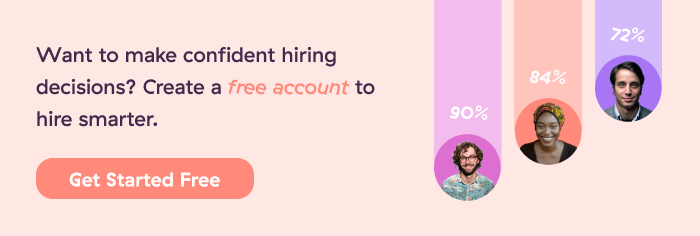
Juste loves investigating through writing. A copywriter by trade, she spent the last ten years in startups, telling stories and building marketing teams. She works at Toggl Hire and writes about how businesses can recruit really great people.




